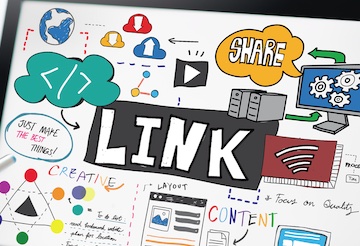Reasons to Avoid Nofollow Link Attributes
[ad_1]
Google launched the nofollow hyperlink attribute in 2005 as a means for web sites to manage PageRank stream from one URL to the subsequent. With nofollow in place, web sites may block the unfold of hyperlink fairness from user-generated content material akin to feedback or paid posts.
The attribute knowledgeable Google to disregard the hyperlink when calculating the goal web page’s natural rankings. Right here’s an instance:
<a href=”https://www.myshop.com/privacy-policy” rel=”nofollow”>privateness</a>
Different search engines like google slowly adopted the attribute. Then, in 2019, Google announced it might deal with nofollow hyperlinks as “hints” somewhat than “instructions,” though it might honor the nofollow meta tag.
In brief, Google may ignore the nofollow attribute for assigning hyperlink fairness. But many websites proceed to deploy it, hoping to manage fairness stream to key pages.
What follows are widespread errors when implementing nofollow hyperlinks.
Frequent Nofollow Errors
PageRank “sculpting” is a dated and oft-debated tactic of controlling the stream of hyperlink fairness on a website. The thought was to nofollow hyperlinks to inside coverage pages — privateness coverage, situations of use, extra — and thus “protect” the hyperlink fairness to pages with natural rating potential.
However in 2009, Matt Cutts, then an engineer at Google, explained the fallacy of sculpting:
If in case you have $10 in authority to spend on these ten hyperlinks, and also you block 5 of them, the opposite 5 aren’t going to get $2 every. They’re nonetheless getting $1. It’s simply that the opposite $5 you thought you had been saving is now going to waste.
So PageRank sculpting didn’t make sense then, and it doesn’t now. A greater strategy is to make sure search engines like google can entry all corners of your website.
But when blocking search bots’ access to sure inside pages is a precedence, use the robots.txt exclusion protocol, which is definitive.
Nofollow hyperlinks to social media websites. One other widespread apply is nofollowing hyperlinks to social media channels. That’s an even bigger mistake than sculpting. It could hurt a website by stopping its social media pages from rating for its model identify.
Rating on your model’s official entities controls extra natural search outcomes. The easiest way to try this is by sending hyperlink fairness to these entities, akin to social channels. Nofollowing these hyperlinks sends deceptive alerts to Google, not sure if the social pages are yours.
Nofollow hyperlinks to exterior editorial pages. Websites have change into reluctant to hyperlink to any exterior web page owing to Google’s efforts towards low-quality and paid hyperlinks.
These days many revered articles have no exterior hyperlinks, even to entities akin to associated manufacturers or channels. In the event that they do exist, hyperlinks are sometimes nofollowed whatever the high quality.
Such a apply might damage rankings, not assist. Having no reliable citations may indicate weaker content material. Google would see no citations if it honors nofollow attributes on exterior hyperlinks.
Hyperlinks to high quality editorial content material inform Google’s algorithm of your website’s belief and worth. By no means nofollow these hyperlinks — assist Google see them.
When to Use Nofollows
I usually use nofollow attributes in simply two hyperlink circumstances: user-generated and affiliate or sponsored.
For each of these, Google now has newer, extra particular attributes: “ugc” and “sponsored,” though nofollow stays acceptable, per Google.
In any other case, I see no purpose to make use of the nofollow attributes. Search Console doesn’t establish inbound or outbound nofollows. Use third-party instruments akin to Ahrefs or Semrush to search out them.
[ad_2]
Source link

